A marketing campaign is a set of actions and efforts aimed at reaching customers and achieving specific objectives. It helps attain a company’s SMART goals: launch a new product, increase sales volume, improve a certain event’s exposure, etc.
In this article, we’ll discuss the effectiveness of marketing campaigns, their benefits, objectives, and types. We’ll also review several marketing ideas, tips, and examples. Finally, we’ll uncover how to create a marketing campaign with SendPulse.
Why are marketing campaigns effective?
You’ve probably noticed that successful marketing campaigns stay in your head for a long time after you watch a TV commercial or buy a particular product. The number of effective campaigns increases all the time. Their examples include Nike’s “It’s Gotta Be the Shoes!”, Old Spice’s “The Man Your Man Could Smell Like,” and many others. They improve company image, build brand recognition, boost sales, and increase ROI.
These campaigns are effective because they stay in customers’ minds for a long time and encourage them to buy products from certain companies. People remember exceptionally impressive and unique campaigns long after they were on TV or the internet. Customers still recognize Apple’s “Get a Mac” campaign that was run in 2006 and are ready to pay high prices for the brand’s products.
Great campaigns make people remember specific companies, providing brands with identity, personality, and emotions.
Now that you know why marketing campaigns are effective, let’s proceed to their benefits.
Benefits of Marketing Campaigns
Consistent marketing campaigns that communicate a clear message have a chance to succeed and bring great results, such as:
- brand recognition;
- big sales volume;
- good reputation;
- wider audiences;
- customers’ trust;
- increased efficiency;
- raised awareness of a product;
- credibility;
Since companies can reap many benefits from marketing campaigns, there’s a point in integrating different channels when developing them. However, you need to have clear objectives to create an effective campaign. Let’s move to the next section to help you define them for your company.
Objectives of Marketing Campaigns
Creating a successful marketing campaign is a long process that requires a lot of effort and professional cooperation. All activities are directed at reaching a company’s primary objectives. You can see the main goals brands usually chase with their marketing campaigns below. They strive to:
- drive sales;
- enhance their brand awareness;
- reach new audiences;
- improve relationships with current customers;
- enter new local or international markets;
- present new products;
- increase market share;
- retain customers;
- improve their sales funnel;
- increase ROI;
- generate leads;
- establish an online presence;
- take positions of industry leaders;
- increase revenue.
Now that you know marketing campaigns’ key objectives, let’s proceed to their types.
Types of Marketing Campaigns
- Email marketing campaign
- Brand awareness campaign
- Traditional media campaign
- Seasonal push campaign
- Product launch campaign
You should decide which marketing campaigns suit your company’s purpose to achieve your goals. Next, we’ll cover the most popular types of marketing campaigns to help you choose one for your business.
Email marketing campaign
Companies leverage this type of campaign to stay in contact with customers and keep them updated about their upcoming sales, launches, referral programs, giveaways, and events via email.
Let’s take Walgreens, for example. The email below informs customers about the company’s discounts.

SendPulse lets your company set up email send-outs informing customers about sales, discounts, webinars, special courses, etc. To create a great email campaign with our service, you don’t need any special skills or HTML knowledge. It’s one of the cheapest and most effective communication channels. SendPulse also provides its users with a free plan and allows them to send up to 15,000 emails to 500 subscribers.
Brand awareness campaign
Many companies gather all their efforts around the process of building and strengthening customers’ awareness of their products or services. You don’t necessarily need to use traditional advertising (run ads on TV or place them on billboards). With digital platforms, marketing is more convenient and accessible. Consider starting a blog and producing unique and informative content, guest blogging, using branded hashtags, partnering with a more popular company and using its visibility, creating your own podcast, etc.
For example, Coca-Cola’s #ShareACoke branded hashtag succeeded in gathering even a wider audience than the company planned to.
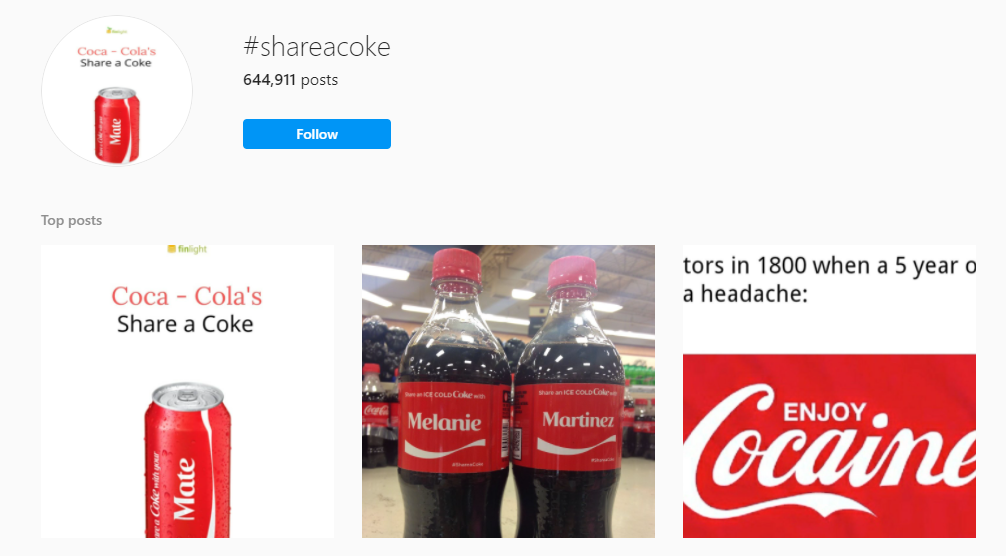
Traditional media campaign
This type relies on traditional media channels like radio, print advertising, and TV. Brands place their ads on billboards, create commercials for TV, and write articles for newspapers and magazines to improve their brand awareness and sales volume. However, bear in mind that this method is costly, especially if compared to email campaigns.
For example, M&M’s created an engaging and funny TV commercial with the brand’s famous characters. The company’s marketing team managed to turn their colorful candies into interesting characters that create a unique atmosphere typical only for M&M’s.
Seasonal campaign
Retail brands and restaurants make use of these campaigns to promote their seasonal sales. Companies that experience a deficiency of financial resources during a particular season use daily offers, conduct winter or summer sales, and give discounts on celebrations like Mother’s Day or Independence Day.
Let’s take H&M’s summer sale, for example. The brand offers customers to enjoy its summer sale and buy summer clothes for men, women, and children with a 20% discount.
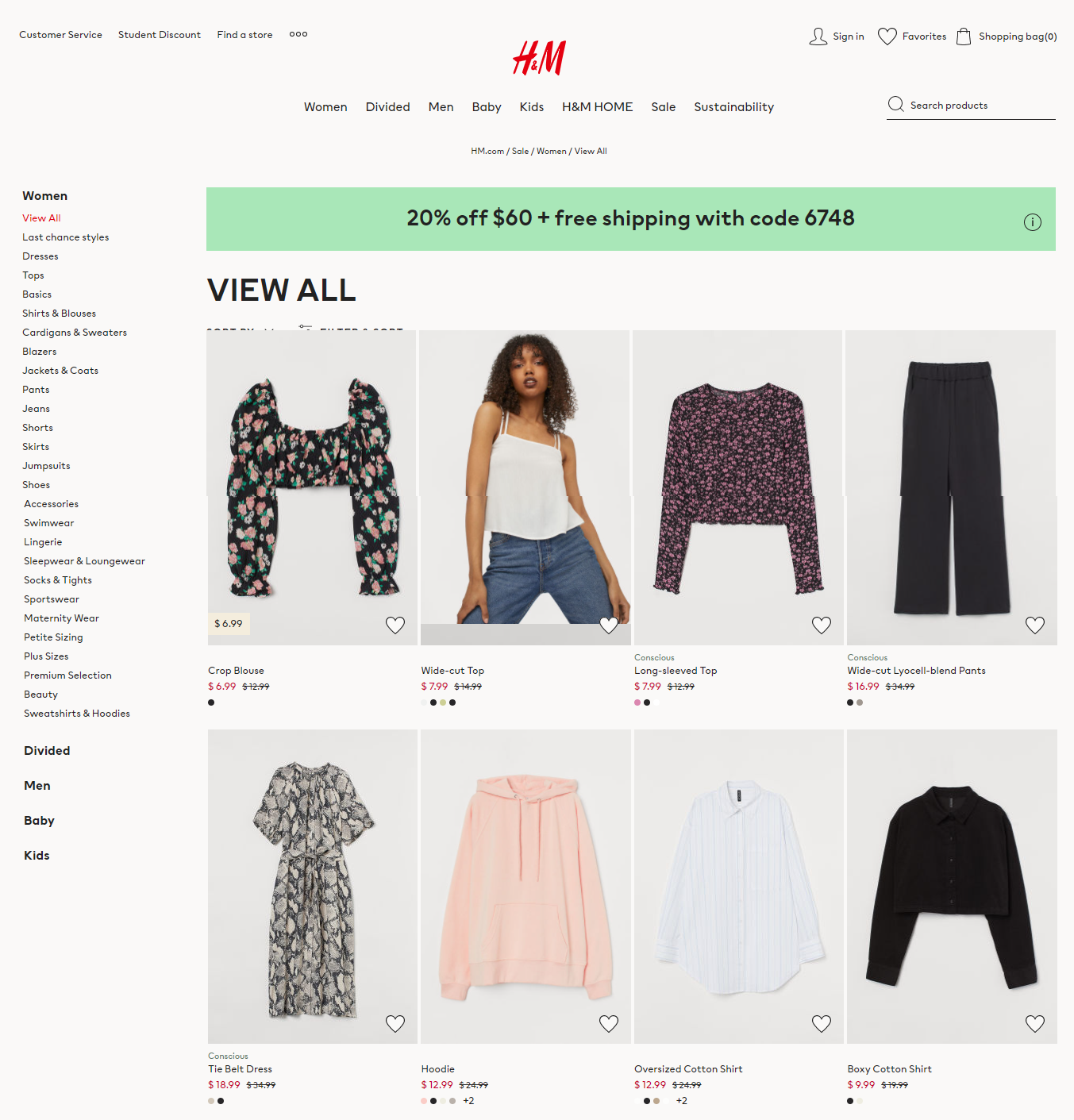
Product launch campaign
When companies launch a new product, they need to introduce it and educate customers about its benefits and features first. You need to market your product right so that you can attract more people to build brand awareness. To do this, you need to embrace different marketing strategies. The most effective techniques include video marketing, trial offers, opt-in forms, influencer marketing, and new communication channels.
For example, let’s take Harry’s, a brand that offers razor blades for an attractive price. To launch a new product successfully, the company provided customers with a trial offer. The brand’s team announced the offer on their website and social media accounts to make it visible. Harry’s succeeded in becoming an online retail giant with many customers and high revenues.
Now that you are acquainted with different types of marketing campaigns, we’ll discuss several great ideas you can implement for your business.
4 Marketing Campaign Ideas
- Leverage social media
- Conduct seasonal sales
- Create promo codes
- Provide customers with a freebie for purchases
We’ve prepared some of the most effective marketing campaign ideas for you to explore, so let’s dive in.
Leverage social media
Since the number of active social media users increases all the time, it’s worth using the famous platforms to your benefit. With video and photo sharing platforms, you can reach your audience without spending lots of resources. Using social networks enables you to communicate with current and potential clients, establish brand loyalty, and increase sales volume. With social media campaigns, you can also improve your brand awareness and website traffic.
For example, Airbnb’s campaign on Facebook aimed to promote its new app. Users had an excellent opportunity to see live streams of people’s travels. The campaign achieved great success and increased the company’s level of engagement.
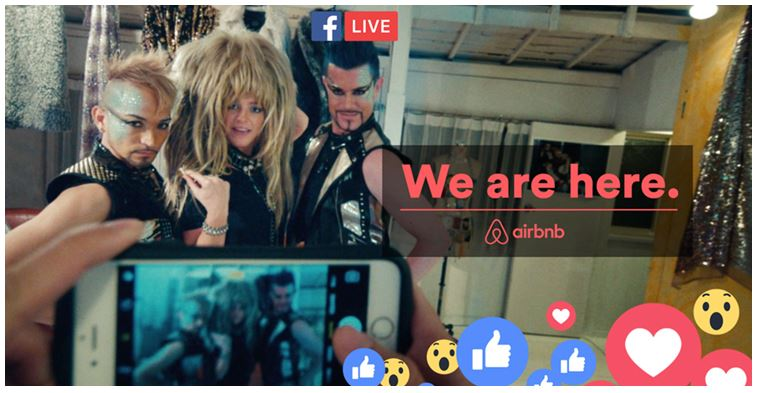
Conduct seasonal sales
You can run a seasonal sale to attract attention to your brand, obtain new customers, and boost your product sales and profit. Think of promoting your sale through different platforms to gain more exposure. By enhancing your brand visibility, you can significantly increase your reach and sales in the long run. Moreover, various paid ads can increase your customer base and make consumers revisit your site and make a purchase again.
For example, Monki invites customers to enjoy its 70% off sale for summer clothing.
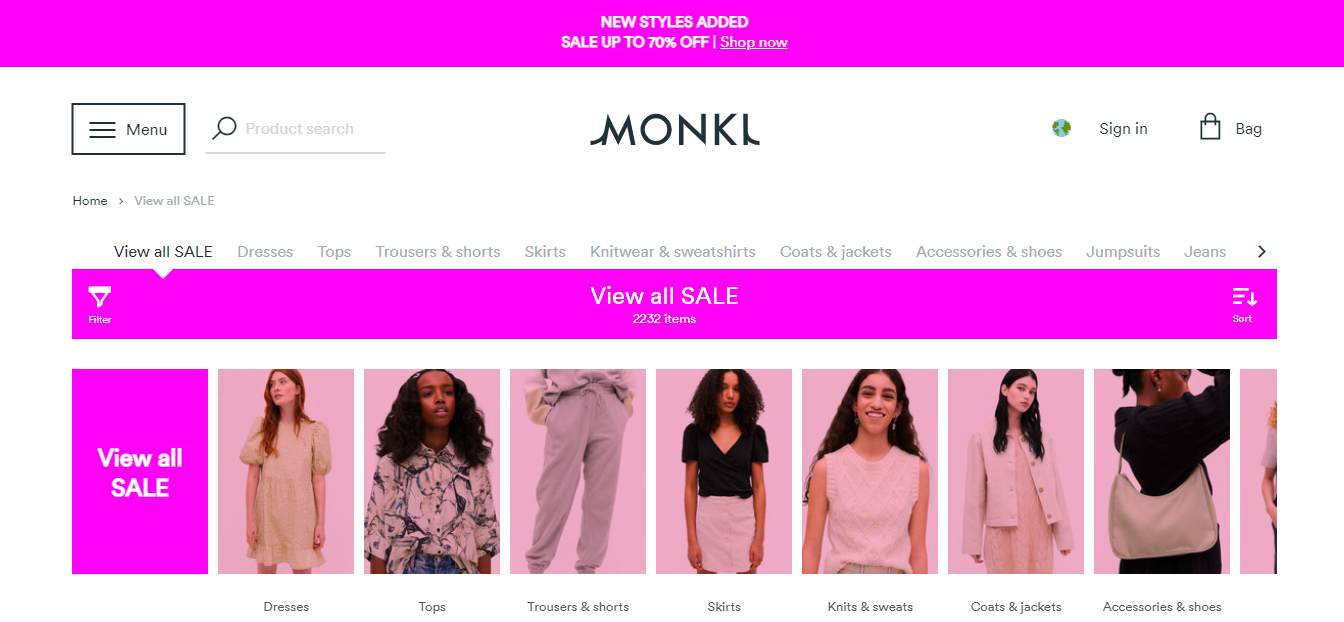
Create promo codes
If you want to introduce new clients to your brand, provide them with coupons. They are beneficial both for customers and your company. Coupons make a first buy cheaper for customers and encourage impulse purchases. At the same time, they can make space for new inventory, introduce new product lines, and increase sales.
For example, Asos invites customers to use its code to get 20% off all its products.

Provide customers with a freebie for purchases
It’s a good idea to thank your customers for spending a certain amount of money on your products. Consider providing your clients with a special gift. Send email campaigns to your subscribers to promote such an offer via email and encourage them to participate.
For example, MAC Cosmetics offers its customers a free gift when they spend a certain amount of money on the brand’s products.

Now that you have some ideas for your future campaign, it’s time to explore our tips on creating it.
4 Tips to Create a Killer Marketing Campaign
- Set SMART goals
- Choose appropriate communication channels
- Think about specific ways to achieve your goal
- Track and analyze your results
To develop and run a great marketing campaign, you need to have a clear understanding of your goals, select the most suitable channels, and motivate customers to take a certain action. If you are interested in getting it right the first time, stick to our four main steps.
Set SMART goals
Before running any campaign, plan all the details to gauge its effectiveness and guide your marketing department. Firstly, define your campaign’s goals. You can create it to promote a product, improve brand engagement, obtain customer feedback, generate leads, bring in new customers, improve customer satisfaction, advertise an upcoming sale, product launch, etc.
Establish SMART (specific, measurable, attainable, relevant, and timely) goals for the best results. For example, let’s say that an apparel brand aims to gather customer feedback from 200 clients about its customer service via surveys sent to customers’ emails by July 21, 2021.
Secondly, determine the ways to evaluate your campaign: email open rates, email click-through rates, responses, spam complaints, etc. Thirdly, select a specific audience segment that might be interested in your campaign. The people you target and the message you create depend on the stage of your buyers’ journey.
Choose appropriate communication channels
Once you know customers’ preferred communication channels, their level of engagement, needs, and problems, it’s time to select your main distribution channels. Analyze your performance metrics to determine which mediums work best for you and which of them you can afford.
Select two or three channels that are popular among your customers. Remember to choose mediums that enable you to achieve your company’s goal. For example, if you aim to promote a website builder, consider using digital platforms for the promotion.
Sometimes companies forget about timing despite it being critical for the effectiveness of marketing campaigns. That’s why you should define your marketing campaign’s start date and deadline. Consider making a calendar with all the important dates of your campaign and a content plan to understand when and what content to publish, what channels to use, etc.
Think about specific ways to achieve your goal
At this stage, you need to think of the efforts and strategies to attain your goal. For example, to gather clients’ feedback on a brand’s customer service, this company needs to create a call-to-action button. It can be placed in an email asking a customer to take a survey and evaluate its support.
As an option, a brand can have a special form on its landing page for customers to leave feedback. Track your performance metrics to gauge the effectiveness of your campaign. They can vary and depend on the marketing channels you prefer. If you have an email campaign, track your open rate, bounce rate, conversion rate, number of unsubscribes, click-through rate, and spam complaints. In case you leverage paid advertising on social media, monitor your campaign’s engagement, impressions, click-through rate, reach, and follows. Companies focusing on SEO should gauge their average session duration, conversion rate, website traffic, and bounce rate.
Track and analyze the results
Monitor your results to figure out what worked and what didn’t. It will help you find out whether you succeeded in attaining your goal. Your campaign results will also give you some insights into what you should and shouldn’t do for your next campaign. This valuable experience and information will help you improve your future campaigns and reach your next SMART goal.
Next, we’ll review how to create effective and successful campaigns with SendPulse.
How to Create a Marketing Campaign with SendPulse
With SendPulse, you can create the following marketing campaigns:
- Email campaign
- SMS campaign
- Chatbot campaign
- Web push campaign
Let’s talk about how to create each of them to help you choose a marketing campaign that suits your business needs.
Email campaign
SendPulse enables you to create and send professional email campaigns without any coding skills and specialized knowledge.
- Register with SendPulse.
- Upload or create your mailing list, and segment it if needed.
- Fill in your Sender information, and add a subject line.
- Select a ready-to-use template or create one from scratch.
- Use our drag and drop editor to add or remove some elements and design an email to your liking.
- Double-check your email before sending it.
- Send your campaign, or schedule it to be sent later.
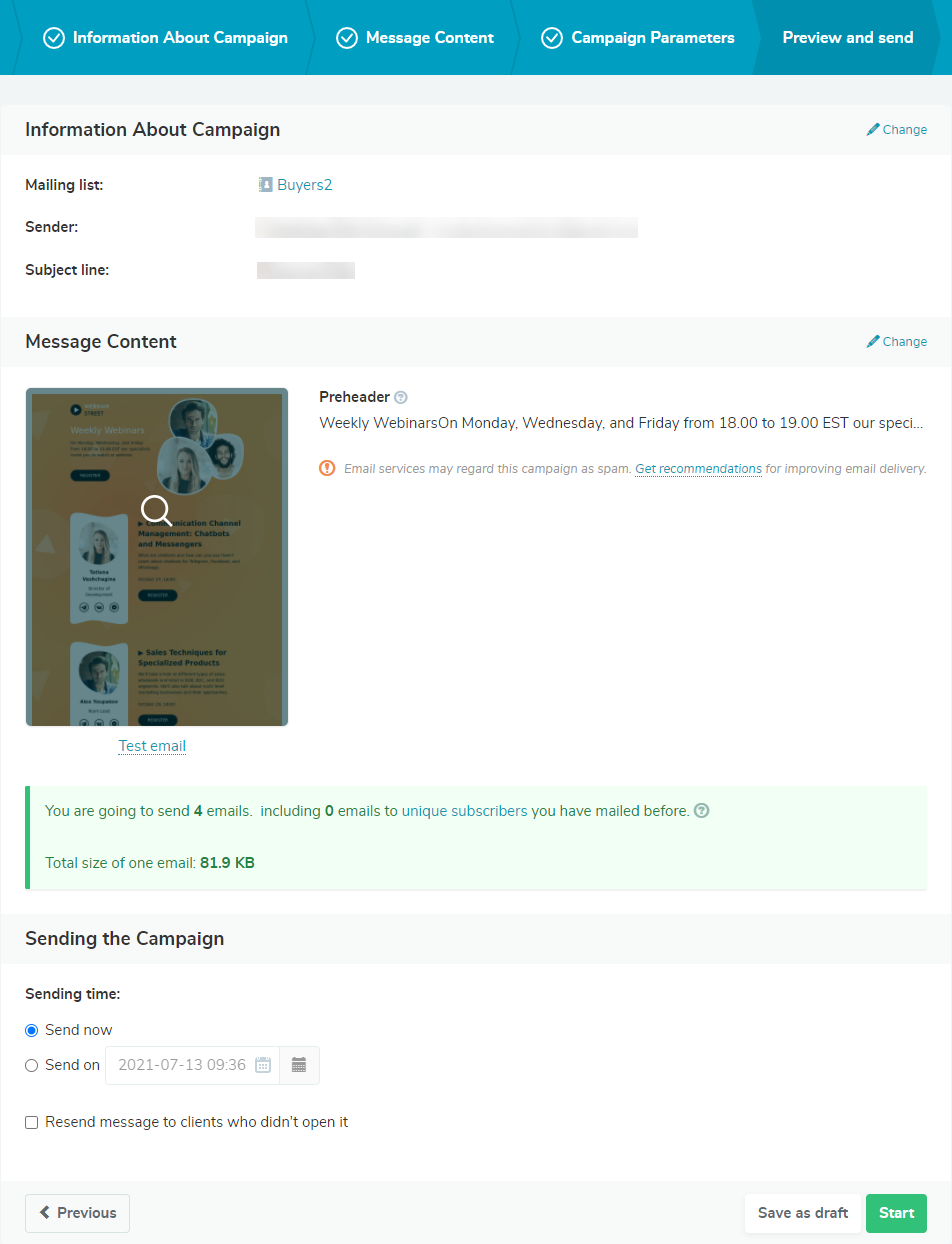
SMS campaign
You can reach your customers and build brand recognition by sending SMS campaigns.
- Create an account with our service.
- Create a mailing list.
- Insert your Sender ID.
- Enter your SMS text.
- Select your recipients.
- Set the date and time of your SMS campaign send-out.
- Send the campaign.
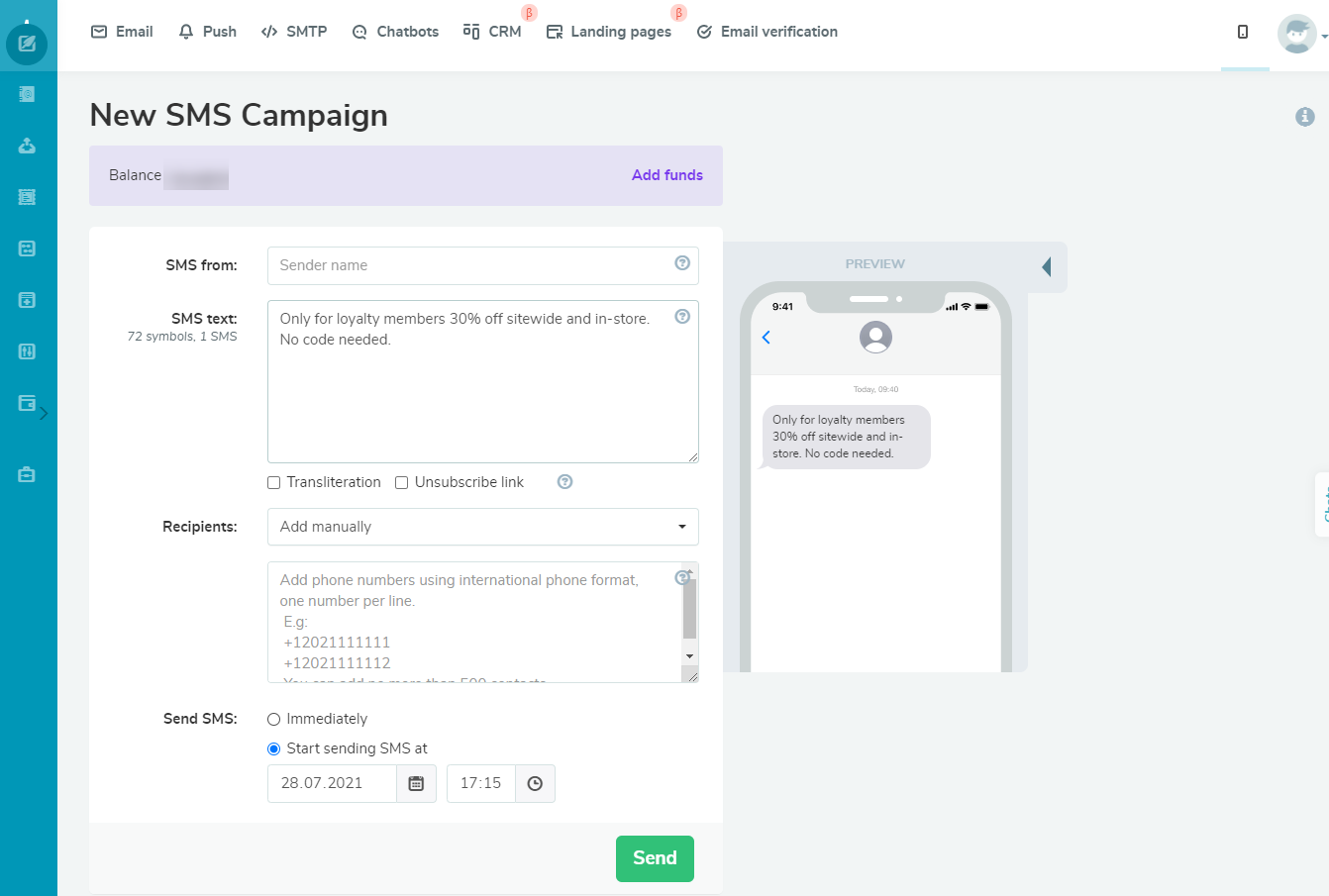
Chatbot campaign
With our service, you can send various Telegram, WhatsApp, and Facebook marketing campaigns.
- Register with SendPulse.
- Go to the “Chatbots” tab, and click “Manage bots.”
- Log in with your social media platform or messenger to create a campaign.
- Select the necessary group pages for your chatbot campaign, and click “Enable.”
- Select your bot, and segment recipients if necessary.
- Enter your message.
- Add a button and other essential elements (image or file).
- Double-check your message and campaign information.
- Send your campaign, or schedule its send-out.
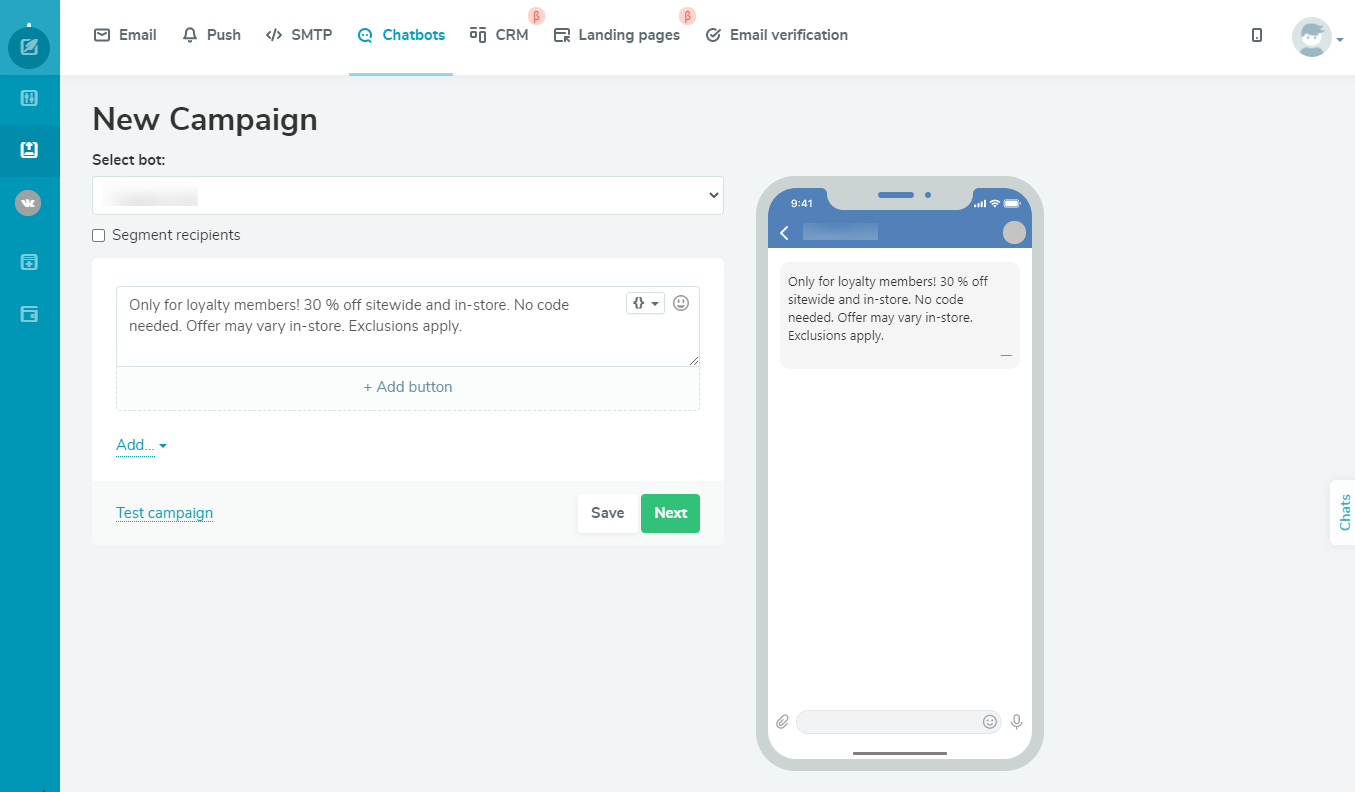
Check out our detailed instructions if you want to send chatbot campaigns on Facebook, Telegram, or WhatsApp.
Web push campaign
You can easily send web push campaigns informing customers and prospects about various seasonal sales, product launches, and events with SendPulse.
- Register with SendPulse if you don’t have an account yet.
- Add your website (click “Push” and then “Add New Website”).
- Fill in the necessary information about your website.
- Add the code to your website.
- Track your subscribers.
- Click “Create PUSH.”
- Select a list of recipients, and add your title, message, link, and image if needed.
- Send your campaign, or schedule it to be sent later.
Check out our article to find out more.
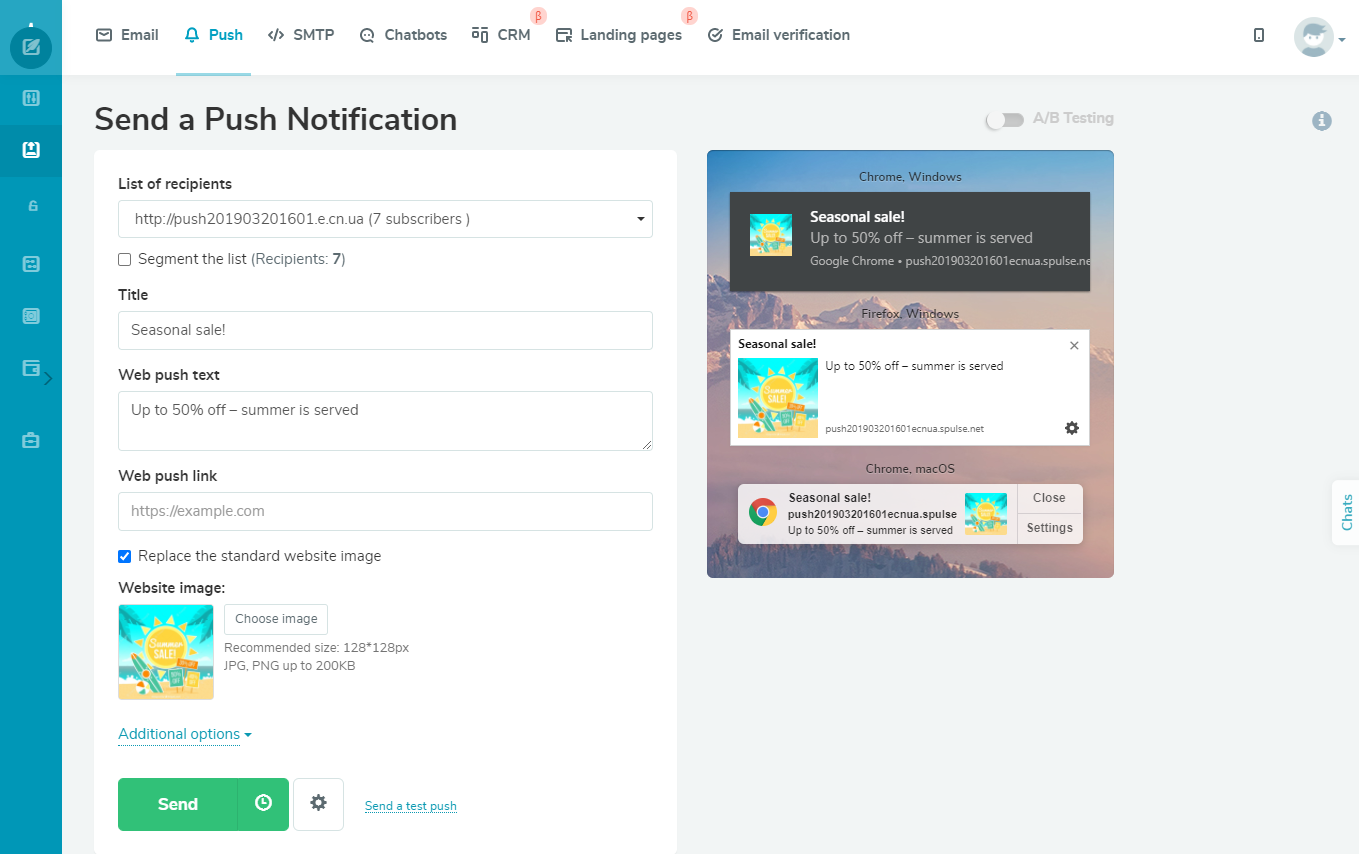
Let’s now jump to several examples of marketing campaigns.
Examples of Successful Marketing Campaigns
Companies write plans, invite professionals, and analyze their idea to develop effective campaigns. We’ve prepared several examples of successful campaigns for you to get inspired.
Thank You, Mom
In 2012, the famous Procter & Gamble campaign won viewers’ hearts with its TV commercial. The commercial’s main characters are mothers of athletes who put all their heart into raising their children. This campaign aims to convey gratitude to mothers for everything they do and is considered P & G’s most prominent campaign in the company’s history.
Got Milk?
“Got Milk?” is an excellent example of a marketing campaign that achieved its primary goal. Marketers identify four main reasons for the large-scale success of this campaign: it was simple, actionable, integrated, and had a sense of humor. Capturing famous people and leveraging different platforms for promotion helped increase the level of milk consumption, and milk sales in California became 7% higher.

Source: CR Fashion Book; Naomi Campbell for “Got Milk?” campaign
Just Do It
This marketing campaign is probably the most recognizable and successful in Nike’s history. Created in the 1980s, the “Just Do It” campaign made the brand even more popular and increased its sales volume and revenues to an incredible $9.2 billion in 1998.
With marketing campaigns, companies manage to achieve their main goals and communicate their messages across different platforms. Use our tips above to create a campaign that will evoke trust and credibility.
Resources:
- This article defines the term, uncovers the types and components of marketing campaigns, and provides readers with a step-by-step guide on how to create a successful campaign.
- In this article, you’ll find important facts about marketing campaigns.
- This article defines the term and unveils several marketing campaign examples.
Last Updated: 22.03.2023




or